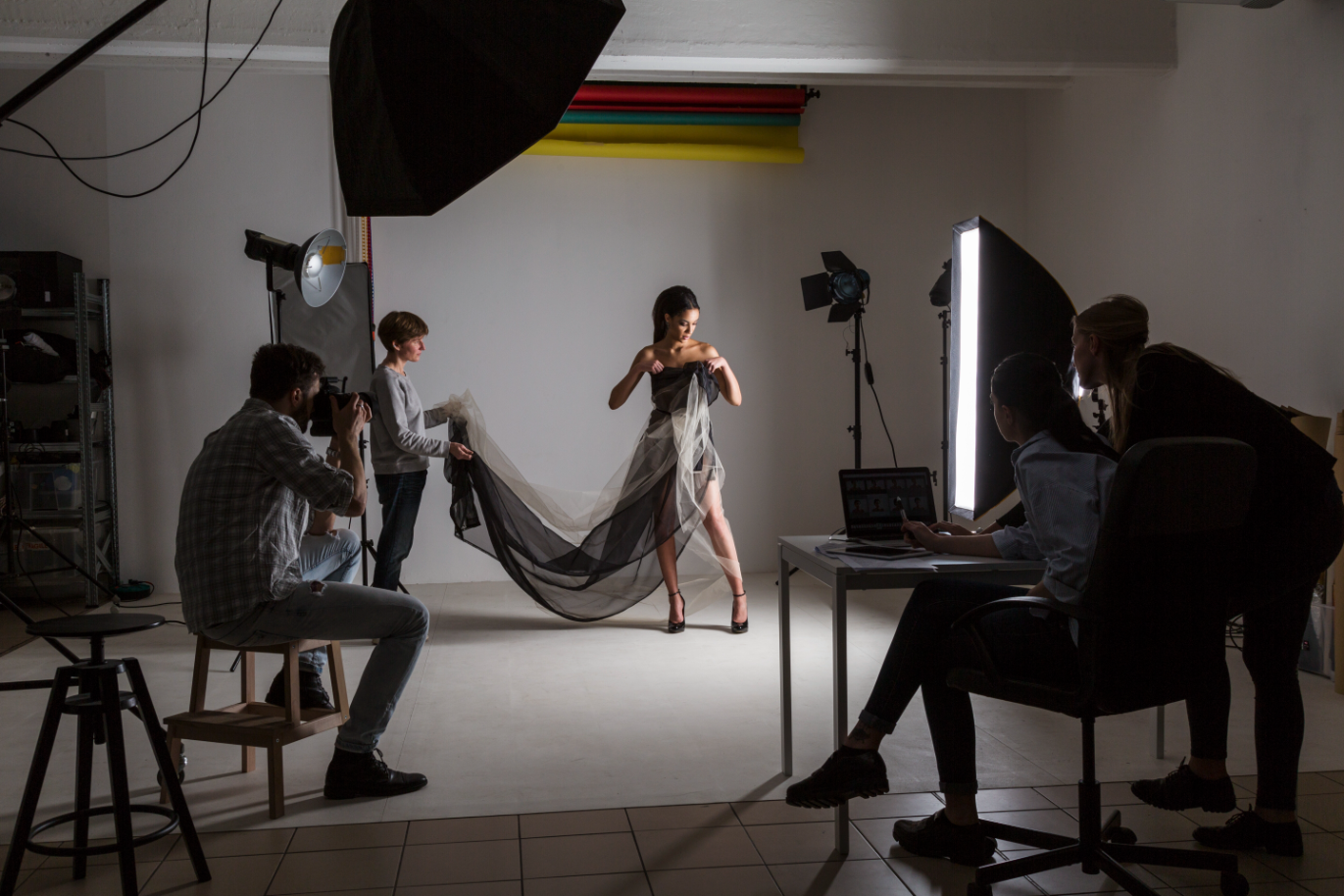Editors & Filmmakers: Master Visual Quality Post-Shoot

The magic of filmmaking doesn't end when the director yells "Cut!" In fact, for editors and filmmakers alike, the post-production phase is where raw footage transforms into a polished, visually compelling story. It's an intricate dance between technical prowess and creative vision, where every decision, from a subtle color grade to a meticulously timed cut, directly impacts the perceived quality and emotional resonance of the final product. Mastering visual quality post-shoot isn't just about fixing mistakes; it's about elevating your narrative, creating a consistent aesthetic, and ultimately, delivering an immersive experience to your audience.
Far too often, the emphasis is solely on the shooting phase, yet even the most stunning cinematography can fall flat without thoughtful post-production. This is where the true artisans of the craft come into their own, refining, enhancing, and often rescuing the visual integrity of a project. Whether you're a seasoned editor or a budding filmmaker, understanding the levers available to you in the edit suite is paramount to achieving a professional, high-quality look that captivates viewers.
The Foundation: Smart Editing Choices & Storytelling Flow
Before you even think about color correction or VFX, the fundamental act of editing itself lays the groundwork for visual quality. A well-paced, seamlessly flowing edit inherently looks more professional and engaging than a disjointed one. This isn't just about cutting out mistakes; it's about selecting the best takes, ensuring continuity, and crafting a rhythm that guides the viewer's eye and maintains their attention. Poor editing, regardless of how good the individual shots are, can make your film feel amateurish and visually confusing.
Editors are often the first line of defense in quality control, spotting and mitigating visual issues that might have been overlooked during the shoot. This includes everything from removing distracting background elements to correcting minor framing issues through subtle reframing. The art lies in making these choices invisible, so the audience remains immersed in the story rather than noticing the mechanics behind the visuals.
Practical Editing Tips:
- Prioritize Performance & Emotion: Always choose the take that best serves the story and character, even if it has minor technical imperfections that can be fixed later.
- Maintain Continuity: Pay meticulous attention to screen direction, eyelines, props, and actor positions to avoid jarring jumps that break visual flow.
- Pacing is Key: Vary shot lengths to create visual interest and control the emotional rhythm. Fast cuts for tension, longer takes for introspection.
- Trim the Fat: Remove unnecessary shots or frames that don't advance the narrative or enhance the visual experience. Less can often be more.
- Refine Framing: Don't be afraid to subtly reframe shots within safe limits to improve composition or balance, especially for close-ups.
Color Grading & Correction: The Emotional Brushstroke
Once your edit is locked, color work becomes your most powerful tool for visual enhancement. It's a two-stage process: color correction and color grading. Color correction is the technical cleanup – ensuring consistent white balance, exposure, and saturation across all clips in a scene, and fixing any issues like color casts. This step is crucial for achieving a clean, natural, and uniform look before any stylistic decisions are made. Without proper correction, your final grade will never look truly professional.
Color grading, on the other hand, is the artistic process of establishing the film's overall look and feel. It's about shaping mood, enhancing atmosphere, and guiding the audience's emotional response. A warm, golden grade can evoke nostalgia or romance, while a desaturated, cool palette might suggest tension or despair. The choice of colors can also help to differentiate timelines, locations, or even character perspectives, adding another layer of visual storytelling.
Practical Color Tips:
- Calibrate Your Monitor: Accurate color work starts with a properly calibrated display. Don't grade on an uncalibrated screen!
- Start with Correction: Always correct first, then grade. Fix white balance, exposure, and contrast before applying stylistic looks.
- Work Scene by Scene: Aim for consistency within each scene, then adjust between scenes to create desired transitions or changes in mood.
- Use Scopes: Vectorscopes, RGB Parade, and Waveforms are indispensable tools for objective analysis of your colors and exposure.
- Subtlety is Power: Often, the most effective grades are the ones that go unnoticed, seamlessly blending into the narrative rather than drawing attention to themselves.
- Experiment with LUTs (Judiciously): LUTs can be a great starting point for a look, but rarely should be used as a one-click solution. Always adjust and refine after applying.
Visual Effects (VFX) & Cleanup: Polishing the Frame
While often associated with blockbuster explosions and fantastical creatures, VFX in post-production frequently involves more subtle, yet equally impactful, visual enhancements and necessary cleanups. These smaller touches can dramatically elevate visual quality by removing distractions, adding realism, or simply making the footage look more polished. Think of it as meticulous housecleaning for your frames, ensuring every pixel contributes positively to the story.
From digitally removing an unwanted mic boom or a reflection in a window, to stabilizing a shaky handheld shot, these "invisible" VFX contributions are vital. They ensure that the audience remains focused on the narrative and characters, rather than being pulled out of the experience by visual inconsistencies or imperfections. Furthermore, subtle environmental enhancements, like adding realistic fog, rain, or even digital set extensions, can transform a mundane shot into something truly cinematic without requiring a massive budget or on-set complexities.
Practical VFX/Cleanup Tips:
- Stabilize Wisely: Use warp stabilizer or similar tools judiciously. Over-stabilization can introduce a "jello" effect. Keyframe specific sections if needed.
- Remove Distractions: Use rotoscoping and content-aware fill tools to seamlessly remove unwanted objects (e.g., crew reflections, distracting logos, power lines).
- Screen Replacements: Replace green screens on monitors, phones, or TVs with desired footage to add detail and realism.
- Digital Makeup/Retouching: Minor skin smoothing, blemish removal, or eye enhancements can be done subtly to improve actor appearance without looking artificial.
- Subtle Atmospherics: Adding digital dust, fog, or lens flares (sparingly!) can enhance mood and depth without needing physical elements on set.
- Grain Management: Add or reduce film grain to match different cameras or create a desired aesthetic.
Resolution, Codecs, and Deliverables: The Technical Edge
The technical aspects of resolution, codecs, and delivery formats are often overlooked, yet they play a critical role in preserving and presenting your visual quality. You can have the most beautifully graded and edited film, but if it's exported in the wrong codec or at an inappropriate resolution, its visual integrity can be compromised. Understanding these technicalities ensures that your hard work translates faithfully to various viewing platforms, from cinema screens to mobile devices.
Choosing the right codec for your workflow (e.g., ProRes or DNxHD for editing, H.264 or H.265 for final delivery) directly impacts file size, playback performance, and most importantly, visual fidelity. Similarly, mastering for different aspect ratios and resolutions (e.g., 16:9 for YouTube, 2.39:1 for theatrical) requires careful planning to avoid cropping issues or unwanted black bars. Delivering a pristine image means not just creating it, but knowing how to package it for its intended destination.
Practical Technical Tips:
- Understand Aspect Ratios: Know your target aspect ratio and frame your shots accordingly, or plan for necessary reframing/cropping in post.
- Master for Your Platform: Deliver different versions for different platforms (e.g., high bitrate for festivals, optimized for web streaming, specific specs for broadcast).
- Choose Codecs Wisely: Use high-quality intermediate codecs (like ProRes, DNxHR) during editing to maintain quality. For final delivery, balance quality with file size (H.264/H.265 are common, but experiment with bitrates).
- Resolution Strategy: If shooting in 4K but delivering in 1080p, you have reframing flexibility. If upscaling, use quality algorithms to minimize artifacts.
- Check Metadata: Ensure all necessary metadata (frame rate, color space, etc.) is correctly embedded for seamless playback and archiving.
- Test, Test, Test: Always export small test clips and review them on target devices/platforms to catch any unexpected compression artifacts or display issues.
Conclusion
Mastering visual quality post-shoot is an ongoing journey of learning, experimentation, and refinement. It's about understanding that every decision made in the edit suite, from the most fundamental cut to the most intricate color adjustment or subtle VFX cleanup, contributes to the overall aesthetic and impact of your film. By embracing these post-production tools and techniques, editors and filmmakers can transform raw footage into truly captivating visual narratives.
The commitment to excellence in post-production is what truly sets professional work apart. It's where the vision comes to life, polished and perfected for its audience. If you're looking for expert guidance, advanced post-production solutions, or simply want to elevate your project's visual quality to the next level, don't hesitate to reach out to the professionals at FilmBaker. Discover how we can help you achieve your creative vision by visiting our contact page: https://www.filmbaker.com/get-in-touch.


